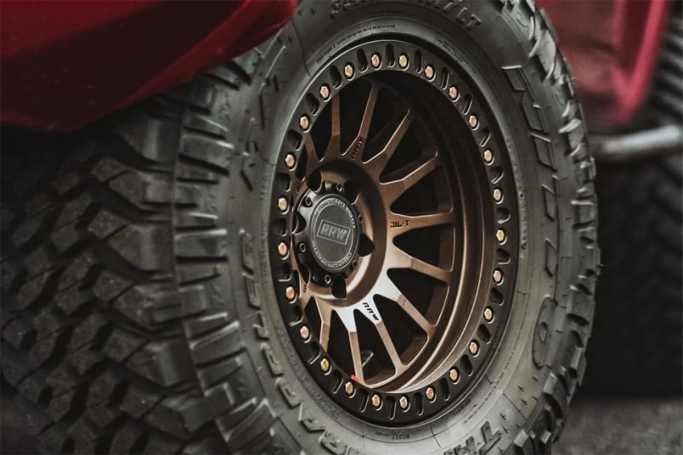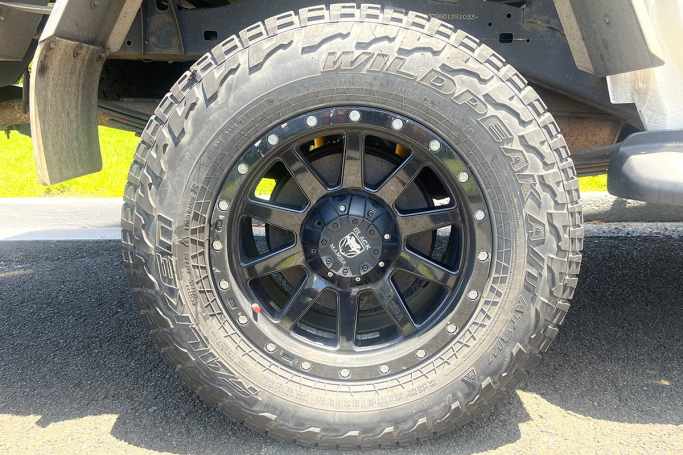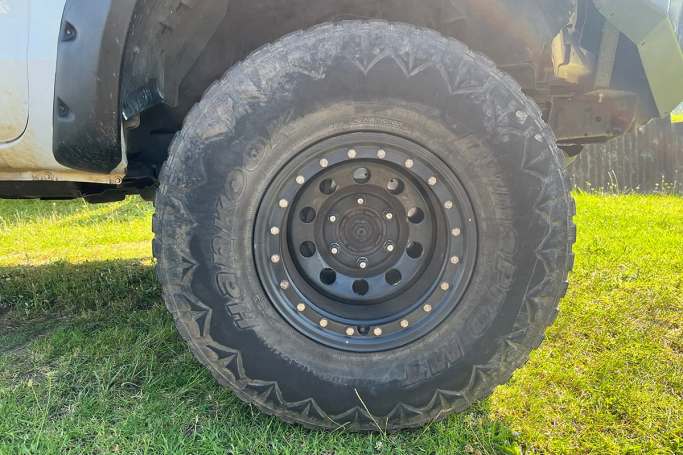
Are wheel spacers legal in Australia?
Are wheel spacers legal in Australia? No, wheel spacers are not legal in...
Browse over 9,000 car reviews

Why are beadlocks illegal in Australia?
Beadlock wheels/rims are designated as strictly for off-road use (only). They are not legal for on-road use in Australia because they have not yet been approved for use on sealed surfaces and do not comply with existing vehicle standards in accordance with Australian Design Rules (ADR).
Simple, yes? Not at all. There’s more to it than that, but we’ll get to that soon enough. First, let’s take a dive into the world of wheels, tyres and pressure.
It’s the reinforced inside edge of the tyre that fits into the rim of the wheel to create a seal to hold air in the tyre; the air pressure that you’ve pumped into the tyre – generally upwards of 30 psi (pounds per square inch) as per the tyre placard on your specific vehicle – and the immense surface tension in play keeps the rubber firmly seated on the wheel.
So, what are beadlocks? A beadlock wheel locks the bead of the tyre to the wheel through a bolts-and-rings set-up and that makes it a more secure fit than when a normal wheel locks to a tyre through air pressure alone.
Dropping tyre pressures in the off-roading world is crucial as it lengthens the tyre’s footprint, offering a more comfortable ride over rough terrain, preserving the integrity of the tyre itself and, more importantly, dropping tyre pressures yields greater traction than if the tyre is running at highway pressure.
The purpose of a beadlock wheel – as it pertains to off-roading – is to provide more flexibility in terms of being able to drop tyre pressures lower than is possible in a vehicle equipped with non-beadlock wheels while off-roading.
That’s why 4x4 beadlock rims and alloy beadlock rims are popular in the off-road community, even if the legality around the use of beadlock wheels while on-road remains a tricky subject.
There’s some risk a tyre without a beadlock wheel may roll off the rim at low off-road pressures, especially if the driver is making sharp turns in the sand, dirt or mud, or otherwise generally driving like an absolute idjit. A tyre on a beadlock wheel is unlikely to roll off the wheel, no matter how low you drop tyre pressures, because the wheel is bolted to the tyre.
Beadlock rims or beadlock tyres are simply other names for beadlock wheels.

So, how do beadlock rims work? A beadlock wheel generally may consist of an inner beadlock ring, nut inserts, an outer beadlock ring, bolts, an inner safety bead, and a valve stem.
As mentioned, it is affixed to the tyre via its bolts-and-rings system and that set-up makes it a more secure fit than when a normal wheel locks to a tyre through air pressure and surface tension.
That set-up detailed above is also known as an external beadlock and locks the outer bead of the tyre. Internal beadlocks lock the inner and outer beads of the tyre against the wheel.
The benefit of a beadlock wheel – in terms of 4WDing – is to provide a wider range of tyre pressures than is possible in a vehicle equipped with conventional wheels that do not have beadlocks.
The disadvantage of a beadlock wheel is that while it doesn’t take much work to seat a tyre properly and safely on a 'normal' wheel, a beadlock wheel requires a lot more work initially, as well as in checking and maintaining its fit.
You must correctly torque however many bolts are on your beadlock wheel – between 18 and 40 at last count – in order for the inner and outer rings of the beadlock wheel to apply even pressure on the tyre bead and thus stay firmly in position.
You’ll have to check, re-check and, if necessary, re-torque the bolts on every beadlock wheel during your travels. If bolts snap, the tyre may come off the bead and then there’ll be big strife.
Also, beadlock wheels add unsprung weight to your vehicle and so will impact acceleration, and increase wear and tear on some vehicle components (e.g. brakes).
Beadlock wheels are expensive additions to your 4WD, compared to running imitation beadlock rims or simulated beadlock wheels on your 4WD.

No, they’re not but like any vehicle component beadlock wheels need consistent attention and maintenance, because, as mentioned earlier, if bolts snap, the tyre may come off the bead which may result in, best-case scenario, a mild inconvenience, or worst-case scenario, catastrophic vehicular damage.
Because beadlock wheels or beadlock rims or beadlock tyres do not comply with what’s currently regarded as a legal wheel for on-road use in Australia.
The details are rather fuzzy and we can’t find any documentation that explicitly states that beadlock wheels are illegal for on-road use, but they still haven’t been ok’d as legal for street use so they remain non-compliant.
Yes, they are not legal for street use in Australia – that means they are not legal for on-road use in NSW, Qld, Victoria and every other state and territory in this country.
Yes, there are slight differences in laws in different states, but only in terms of the severity of the infringement notice, demerit points and fine imposed on the allegedly guilty party – and all of that largely hinges on how grumpy the attending police officer is.

You may be caught and cautioned or you may cop an infringement notice, demerit points and fine deemed to be suitable to impose on the allegedly guilty party (you).
In NSW, for example, if your beadlock wheels are, in the moment, regarded as non-compliant you’ll get an infringement notice on the spot (perhaps “Use light vehicle not comply with tyres standard” or “Use light vehicle not comply with standard - other”) and a $116 fine.
No, however, to avoid any fines or strife, instead of putting actual beadlock wheels on your vehicle, you could run imitation beadlock rims or simulated beadlock wheels – these look like real beadlock wheels but they’re actually standard wheels with an outer ring and bolt heads only. Bonus: they are nowhere near as expensive as ‘real’ beadlock wheels, so there’s that…
Contact the appropriate government transport department in your state or territory – or politely ask the next police officer you see.
Comments